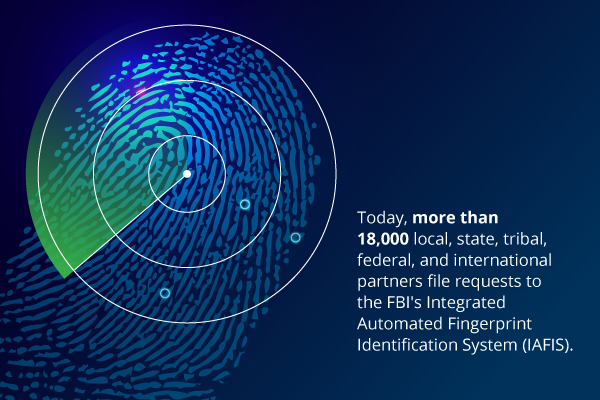History of use
Law enforcement agencies first leveraged fingerprint recognition for criminal identification in the late 19th century. The first-recorded case occurred in Argentina, where a police official used a latent fingerprint to solve a double-homicide investigation in 1892.
U.S. law enforcement agencies began formally documenting fingerprints soon after in the early 1900s, using the uniqueness of fingerprints as a forensics tool. By 1945, the U.S. Federal Bureau of Investigation had processed 100 million fingerprint cards. That number doubled by the 1980s, spurring development of a digital library of fingerprint samples called the Automated Fingerprint Identification System (AFIS).

Aware became involved with AFIS in 1993 when it helped the FBI and the National Institute of Standards and Technology (NIST) develop the WSQ image compression algorithm, which facilitated storage of high-quality photographic fingerprint samples. This was the first large-scale fingerprint digitization effort.
By 1999, the FBI and NIST had also developed interoperability standards to make fingerprint samples shareable between federal and state and local law enforcement agencies. The tragedies of 9/11 extended the use of biometrics to border management, immigration, and military operations.
Today, more than 18,000 local, state, tribal, federal, and international partners file requests to the FBI’s Integrated Automated Fingerprint Identification System (IAFIS).
How has fingerprint recognition’s role expanded?
Fingerprint recognition is now used in many applications beyond law enforcement. These include:
- Mobile authentication: Users verify their identity via fingerprint scan to access a mobile device or application.
- Civil identity systems: Governments use fingerprint recognition to verify civilian identities for voting, benefits disbursements, and border security.
- Physical access control: Employers and businesses use fingerprints for time and attendance and to manage facilities access .
- Onboarding: Organizations use fingerprint recognition for identification of prospective customers and employees to prevent fraud.
- Identity management: Organizations use fingerprint recognition to prevent duplicate or false identities.
What are fingerprint algorithms?
Fingerprint images are collected from individuals in a grayscale format, ideally at 500 ppi or greater resolution. Fingerprint “templates” are generated from features of the image, including location and direction of ridge endings and bifurcations.
Fingerprint matching algorithms compare the features from the original template to those in the template of the newly collected sample. Fingerprint images are archived and used to generate new templates in the event that template generation and matching algorithms are updated.
A fingerprint record can include data from one finger or for all ten. Criminal systems might include additional data, such as images of rolled fingers (rolls), and also palms. Using more fingers improves match accuracy since more data is being compared. All fingerprint samples (both the original template and samples for comparison) must be captured in the highest quality to improve matching performance.
Aware products for fingerprint recognition
Aware offers the following fingerprint recognition products and solutions:
- WSQ1000: Fingerprint image compression SDK.
- NISTPack: Data formatting compliance and quality SDK.
- SequenceCheck: Sequence error checking SDK.
- Nexa|Fingerprint: Fingerprint matching SDK.
- AwareXM: MINEX-certified interoperable verification SDK.
- FingerprintWorkbench: Examiner workstation application.
- AwareABIS: Automated fingerprint identification system (AFIS).
Learn more about Aware’s portfolio of fingerprint recognition products and solutions.